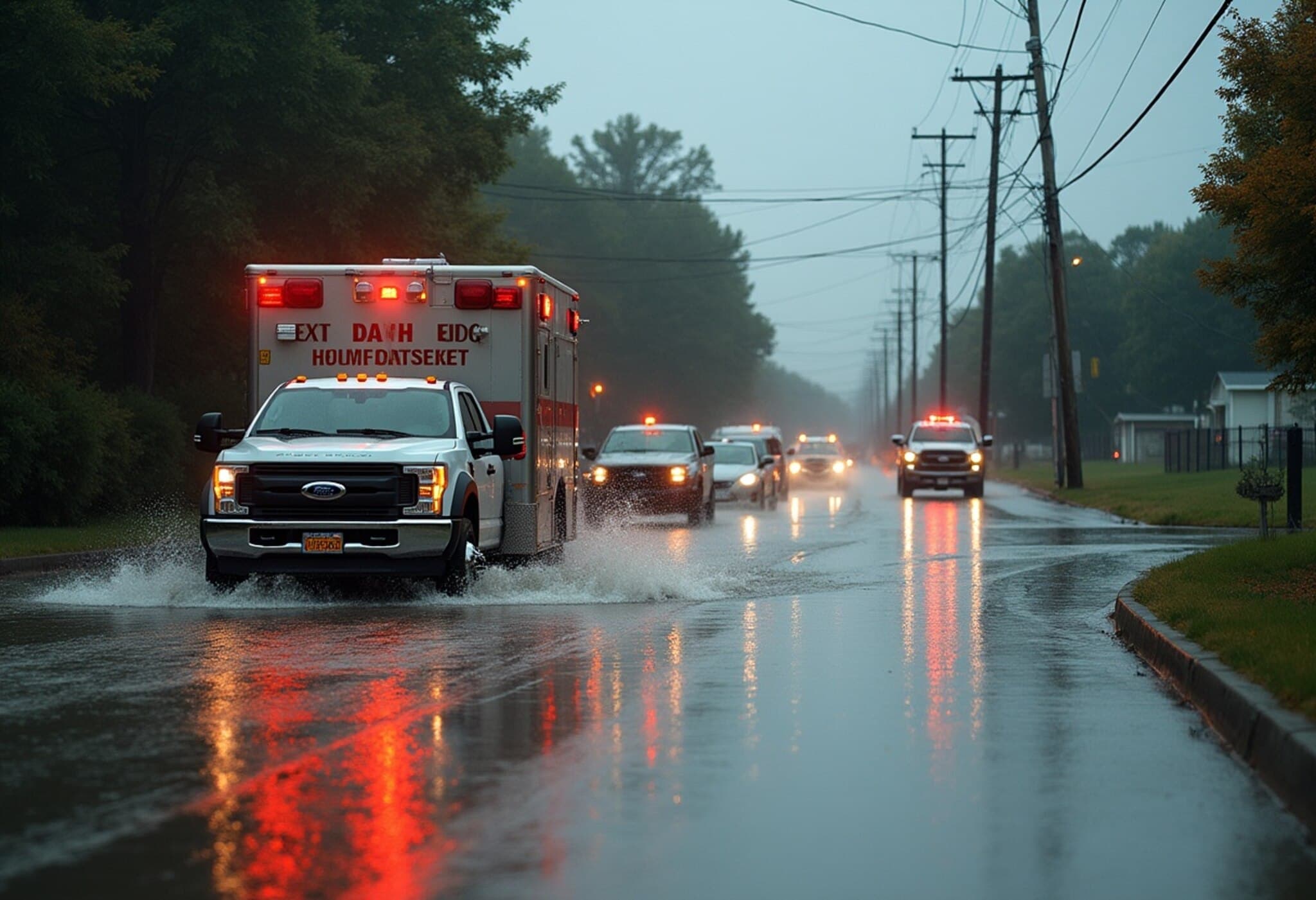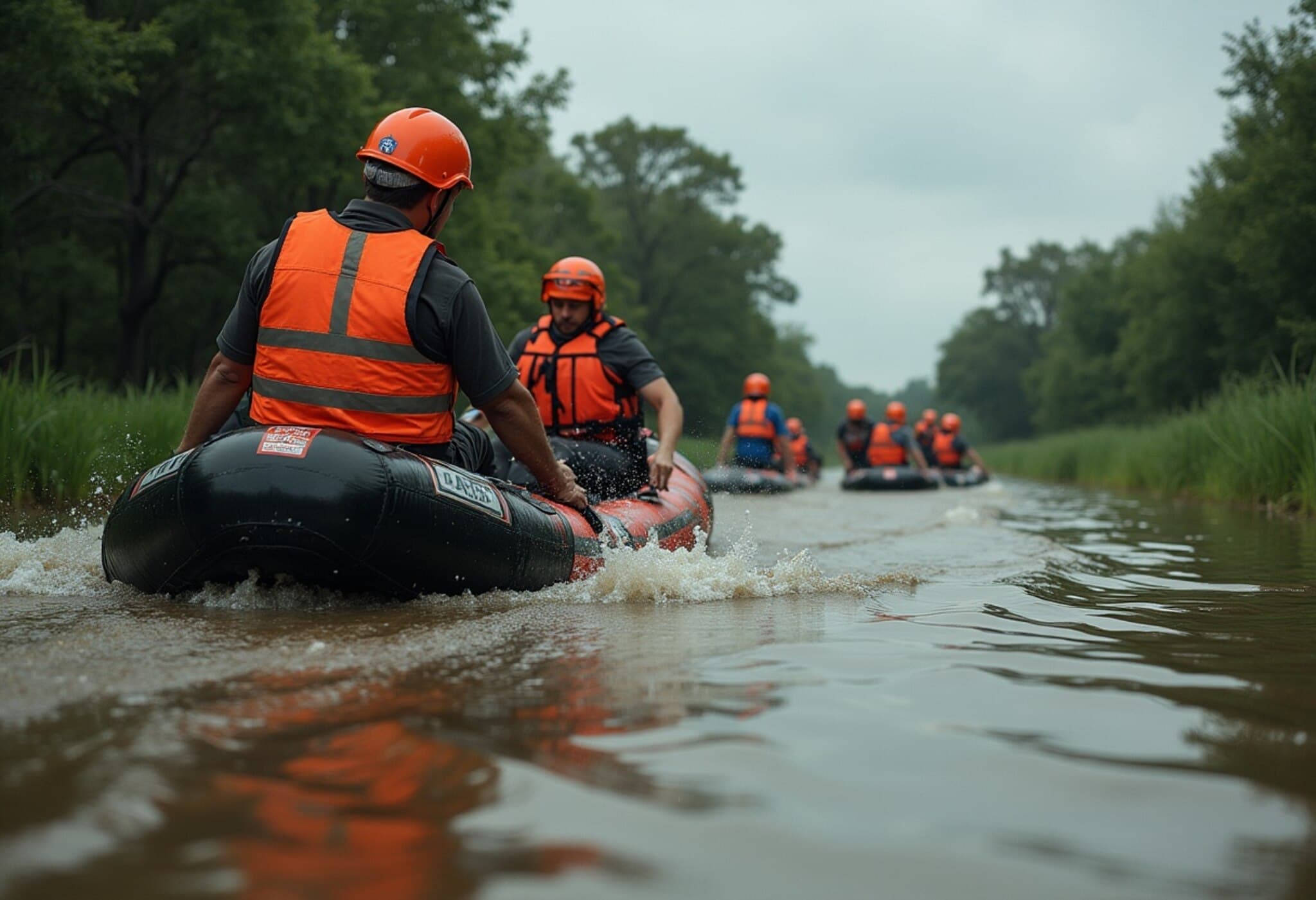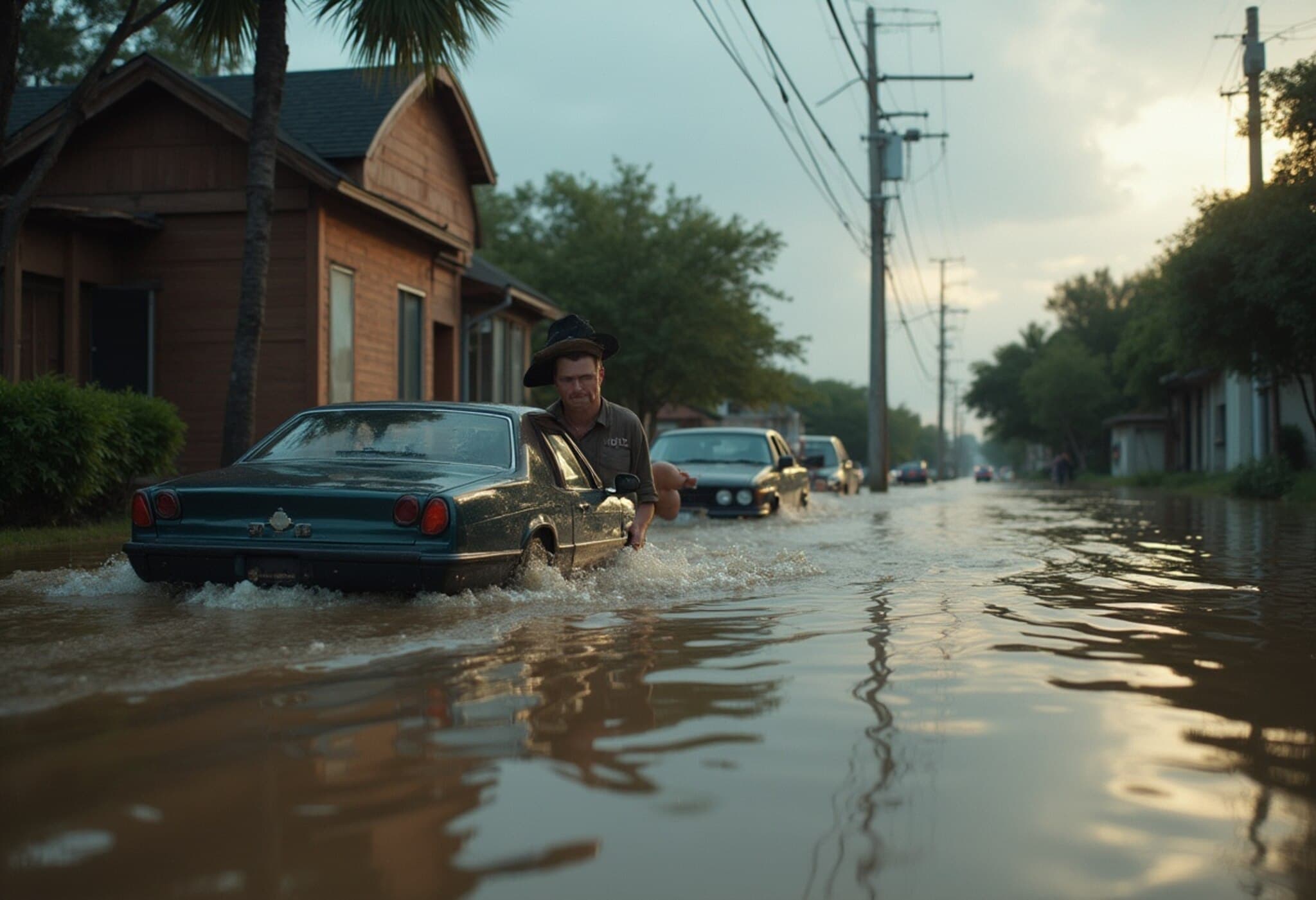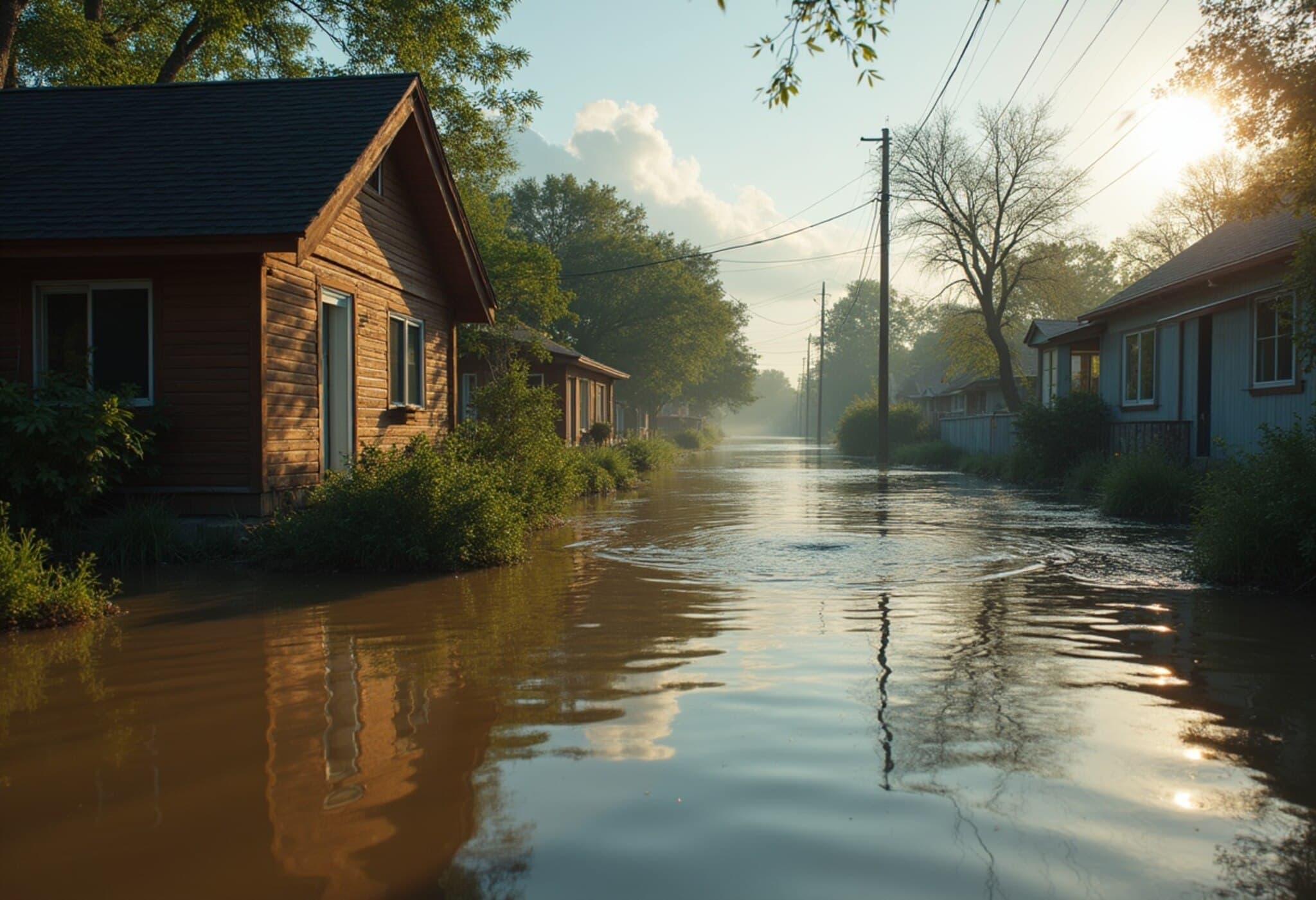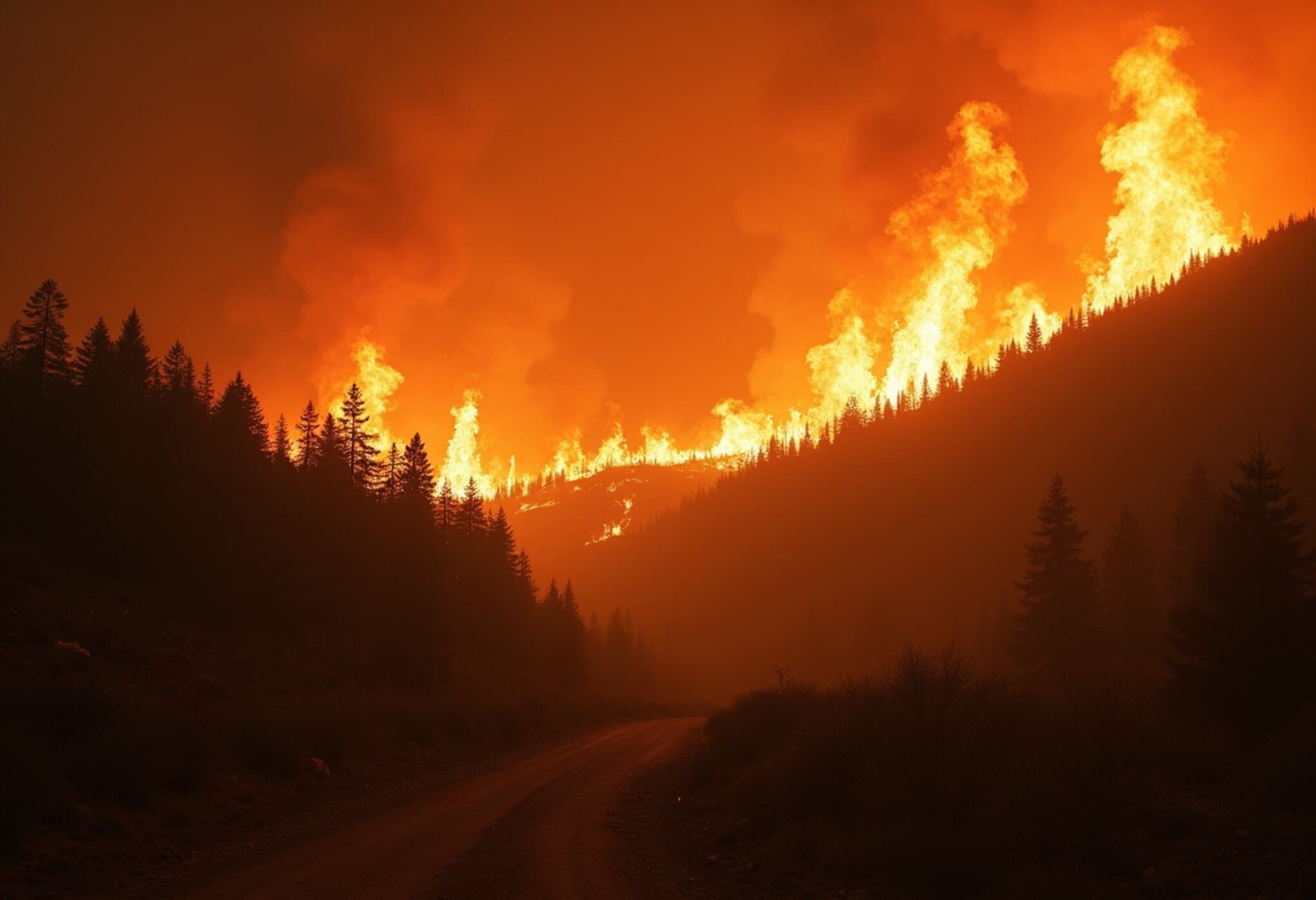Tragic Loss in Tennessee Flash Floods: Family of Three Killed
In a harrowing night of relentless rain and sudden flooding in Tennessee, a mother, father, and child lost their lives when a large tree fell onto their vehicle amid the saturated grounds of East Ridge, a suburb of Chattanooga. The incident occurred shortly after midnight, underscoring the swift and deadly nature of flash floods that overwhelmed the region.
Rapid Flooding Provokes Mass Rescues and Emergency Response
The extreme weather, described by local authorities as unprecedented in scale and speed, led to widespread chaos on roads and in homes. More than 60 vehicles became stranded on the flooded Interstate 24 alone, prompting urgent rescue missions by firefighters and emergency services. Hamilton County's Emergency Management Director, Chris Adams, described harrowing scenes where first responders carried vulnerable individuals through waist-deep waters to safety on elevated highway dividers.
Emergency Calls Surge Amid Rising Waters
Between 6 pm and midnight, Hamilton County's 911 center received over 940 emergency calls, stretching their resources to the limit. Barbara Loveless, director of operations for Hamilton County 911, explained that calls were holding for minutes at a time, highlighting the scale and urgency of the crisis.
Heroic Acts Amid Disaster: Real Stories from the Flood
Troy Plemons, a communications technician for Chattanooga’s EPB utility, recounted his daring rescue of a woman trapped in a rapidly flooding SUV. Stuck in the tumultuous traffic, Plemons and two workers from Lawson Electric noticed the water rising dangerously high around the vehicle. Recognizing the peril, Plemons broke the window using a tool borrowed from colleagues and helped the woman to safety as water levels surged to her neck within minutes.
"It was a rush for sure," Plemons said. "I didn’t think there was any time. I was doing everything I could to get her out because the water was rising pretty quick." The teamwork of Plemons and Lawson Electric workers Austin Camp and Brandon Shadwick facilitated the rescue of approximately 25 to 35 people stranded in vehicles and homes, from infants to seniors.
Historic Rainfall and Regional Impact
The National Weather Service reported more than 6.4 inches (16 cm) of rain fell in Chattanooga on Tuesday alone, marking the city’s second wettest day on record since 1879. The highest recorded single-day total was 9.5 inches (24 cm) during remnants of Tropical Storm Lee in 2011.
Widespread flooding forced closures of major roadways, including sections of Interstate 24, and prompted swiftwater rescue teams to evacuate residents trapped in rising waters. While property and infrastructure damage was substantial, East Ridge’s mayor noted that the physical damage was less severe than initially feared, offering a glimmer of relief amid the nonetheless tragic human toll.
Expert Insight: Why Flash Floods Become Deadly So Quickly
Dr. Emily Harper, a hydrologist specializing in urban flood dynamics, explains that flash floods in regions like Middle Tennessee occur rapidly because of saturated soils that can no longer absorb rainfall, combined with terrain that quickly channels runoff into populated areas. "This creates a dangerous surge of water in a matter of minutes," Harper notes. "The challenge lies in public awareness—many underestimate shallow floodwater’s potential to sweep away vehicles or destabilize trees, as tragically seen here." She stresses the vital importance of obeying road closures and flood warnings.
Looking Ahead: Preparing Communities for Increasing Flood Risks
In the context of climate change, intense rainfall events and flash flooding are increasing in frequency and severity across the United States, including the Southeast. Local governments and emergency responders face growing pressure to enhance infrastructure resilience, improve early warning systems, and intensify community education to prevent future tragedies.
Summary and Reflection
The Tennessee flash floods have painfully reminded us of nature’s swift fury and the human vulnerability to extreme weather. The courage demonstrated by first responders and everyday citizens during the crisis is commendable, yet questions remain about how communities can better prepare and respond to these sudden deluges in the years ahead.
Editor’s Note
Flash floods claim lives and disrupt communities, underscoring the urgent need for comprehensive flood management strategies in flood-prone areas like Tennessee. Readers are encouraged to consider how urban development, emergency protocols, and personal preparedness can evolve to safeguard lives amid growing climatic uncertainties. What lessons will policymakers and residents take from this tragedy to bolster regional resilience?

